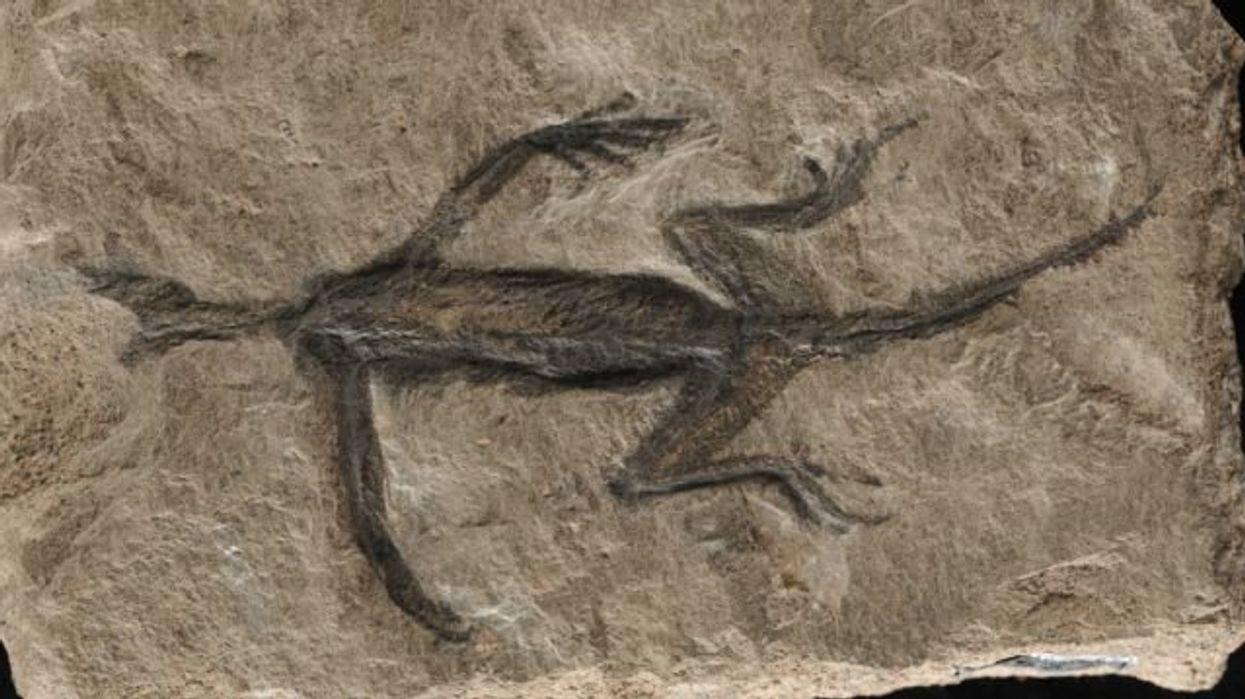Science & Tech
Alex Daniel
Feb 16, 2024

Tridentinosaurus antiquus
Dr Valentina Rossi
One of the oldest animal fossils ever found, which dates back 280 million years and was excavated in 1931, is still revealing fresh secrets.
The Tridentinosaurus antiquus was found in the Italian Alps, and is thought to be among the oldest evidence of lizards on Earth.
It has been exciting paleontologists for decades, partly because of how well it was preserved. A dark imprint of the animal's body runs along the inside of the fossil, making it a particularly dramatic record.
But now, scientists have worked out that the imprint, long thought to be preserved skin, is something else entirely: black paint.
Valentina Rossi, a paleobiologist at University College Cork, was carrying out a study of the incredible remains when she realised what was going on.
She told ScienceAlert: "At first glance I must say I thought the fossil was looking a bit… peculiar.
"Other colleagues of mine told me they had the same reaction. But fossils are always a bit weird, so I carried on my research and after analysing microsamples of what looked like the body outline (so, the skin) I realised that nothing made sense.
"The molecular analyses finalised the results that what we had was not carbonised soft tissue, but black paint."
So striking is Tridentinosaurus that scientists tried to work out how it looks the way it does for much of the 20th Century.
It is rare that soft tissue is preserved like this, because it usually decomposes before the fossilisation process gets started.
Scientists had overlooked the fact that it might not be soft tissue at all.
Rossi and her colleagues first found that there was a coating over the entire fossil – fairly common practice in paleontology to protect the specimen.
Beneath that was the black material thought to be preserve skin, which they scanned in a number of different ways.
The results showed that it wasn't organic matter at all, but manufactured paint.
"I think I can honestly say we were all a bit in shock and sad," Rossi said, "but we realised that this is a glimpse in the history of paleontology. Today we can count on powerful techniques that allow us to look at fossils at the molecular level, and this was not possible even 10 years ago."
Despite the obvious disappointment, the rest of the fossil is genuine.
But why someone decided to cover it with paint? We may never know.
How to join the indy100's free WhatsApp channel
Sign up to our free indy100 weekly newsletter
Have your say in our news democracy. Click the upvote icon at the top of the page to help raise this article through the indy100 rankings.
Top 100
The Conversation (0)













